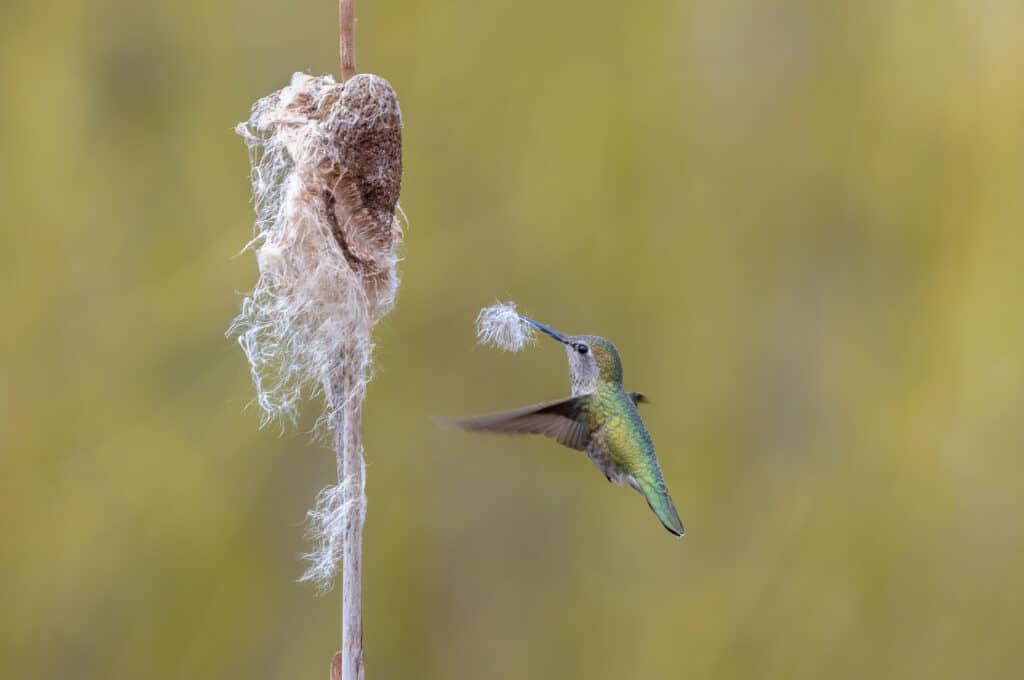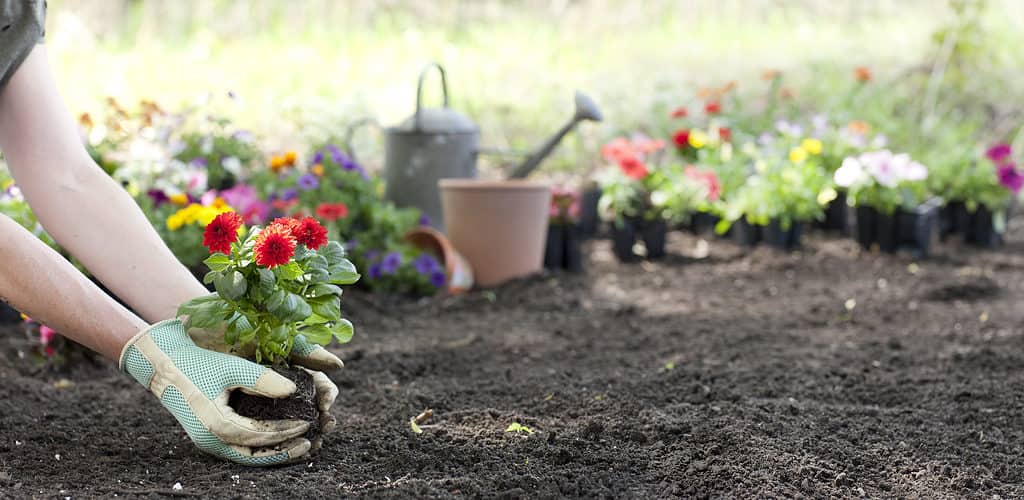With vibrant hues and mesmerizing hovering techniques, hummingbirds fascinate birders and nonbirders alike. Hummingbirds have adapted to live in different habitats across North America. Filled with abundant streams, lakes, forests, and rivers, Washington State provides hummingbirds with shelter, food, and plenty of cover from predators. When hummingbirds leave Washington depends on their species and migratory habits. You can experience these delightful birds close-up by discovering when and where to look for them.
Hummingbird Migration
Hummingbirds do not migrate in groups like other migratory birds. Their timing is based on individual preference. In Washington state, some hummingbirds may pass through on their way to nesting sites in Canada, while other species stop for the summer to raise their young.
Residents and visitors to Washington state can expect to see the most hummingbirds during July and August. A few species stop in the state during their migratory travels, while one species permanently calls Washington home. Most hummingbird species that visit Washington migrate to winter grounds outside the state. Here’s a look at when hummingbirds start arriving and leaving the state.
When to See Hummingbirds in Washington State
Anna’s Hummingbird (Calypte anna)
The chances of catching a glimpse of an Anna’s hummingbird in Washington State are high, as they are the only species to spend their winters in the colder northern climates. They are most at home on the coastal side of the state, west of the Cascade Mountain range. On this side of the state, you can spot an Anna’s hummingbird year-round.
Anna’s habitat includes woodlands, gardens, streams, parks, and coastal shrubland. They eat a mixed diet of insects and nectar. The females are mostly green, with a few pink throat feathers. The males are metallic green and have a bright reddish-pink throat and crown. While they may be seen at higher altitudes in the summer, they migrate to lower altitudes for winter.

Anna’s hummingbirds build their nests six to twenty feet off the ground, near a source of nectar.
©Devonyu /Shutterstock.com
Rufous Hummingbird (Selasphorus rufus)
Rufous hummingbirds arrive in Washington when the weather begins to warm up in spring — typically in March, but could be as early as late February or as late as April. Some rufous hummingbirds migrate as far north as Alaska, but Washington is a common location for their summer breeding and nesting sites.
Males have a rusty coloration and flashy red-orange throat feathers. Females are green and white with some iridescent feathers on their throats. They can be seen all over Washington state and like to nest high up in deciduous or conifer trees. Their diet mainly consists of nectar from red tubular flowers and small insects. They will also sip sap from holes made by woodpeckers.
Rufous hummingbirds are territorial and fiercely protect their food sources from other hummingbirds and animals. They have the longest migration of any hummingbird — traveling an average of 3,900 miles yearly. Rufous hummingbirds leave Washington in July and August to start their journey south to Mexico.
Black-chinned hummingbird (Archilochus alexandri)
You can spot a black-chinned hummingbird in the eastern part of the state, especially in the riparian wetlands of northeastern Washington. They begin arriving in Washington in May and have a short stay — leaving the state in July and August to migrate south to Mexico.
Black-chinned hummingbirds create a distinctive hum when they fly, which sounds almost like a bumblebee. Males have a green body and white breast, and their head appears all black — but their throat is an iridescent purple color. Females are green with white breasts and have a greenish-grey head and spotted throat.
Mountain and alpine meadows tend to be favorite nesting sites for Black-chinned hummingbirds. However, you can find them in urban gardens, orchards, and canyons with thick shrubs. They eat both nectar and insects, but when nectar is scarce, they survive by eating solely insects for a short period of time.
Calliope Hummingbird (Selasphorus calliope)
Calliope hummingbirds are the smallest bird in Washington State. They arrive in early spring and begin migrating south for the winter in late summer.
Both male and female Calliope hummingbirds have short wings and tails, compared to other hummingbird species. The Calliope also has a short beak and is much thinner than most species. Males have shiny green feathers on their bodies and long downward pointing reddish-magenta colored feathers on their throat, giving their throat a textured appearance. The females have a bronze and green body with a peach belly.

The calliope hummingbird is the smallest native bird in the United States. It has distinctive magenta throat feathers.
©MTKhaled mahmud/Shutterstock.com
The calliope prefers mountains, canyons, and edges of streams for its nesting sites. They will nest at elevations up to 11,000 feet above sea level. Compared to the other hummingbird species common to the state, the calliope is the most rarely spotted species.
In addition to the four common species found in Washington state, a few other species have been viewed on their way through to nesting areas outside the state. Broad-tailed hummingbirds, Costa’s hummingbirds, and ruby-throated hummingbirds are among the occasionally-sighted species in Washington state.
How to Host Hummingbirds in Washington
Washington’s native vegetation and abundant insect life support hummingbirds’ need for shelter and food. Similarly, urban areas can be equally appealing to hummingbirds. With various flowers and nectar-producing plants, yards can sustain these delightful visitors.
Supplementing the one resident hummingbird, the Anna’s hummingbird, with a hummingbird feeder in the winter can help sustain them through cold periods. You can also support the Anna’s hummingbird by planting winter blooming plants.

Planting red and orange flowering plants in your garden helps attract and feed hummingbirds.
©iStock.com/Liliboas
Since hummingbirds need nectar and insects, you can support them with more than a feeder by planting a hummingbird-friendly garden. A garden full of native nectar-producing plants will attract a rich insect life and give hummingbirds a natural glucose source. Planting orange or red tubular flowers is a great way to attract hummingbirds. Although it varies by species, most of the migratory hummingbirds in Washington leave for southern wintering grounds by the end of September.
The photo featured at the top of this post is © David Kish/iStock via Getty Images
Thank you for reading! Have some feedback for us? Contact the AZ Animals editorial team.







